The article tells about what kinds of rules of etiquette exist, as well as about what rules of etiquette should be known to children from an early age.
Contents
- Types of Etiquette for Children
- At what age should etiquette be started?
- Etiquette of courtesy of children: lessons
- Etiquette for table for children and school children:
- rules Video: Presentation Etiquette and rules of behavior at the table
- Children's etiquette
- Children's behavioral etiquette in public places
- Children's etiquette in the street
- Children's behavioral etiquettetheater
- Video: Rules of conduct in the theater
- Etiquette of communication of children with people
- Speech etiquette for children: instruction of younger schoolchildren
- Rules of etiquette for behavior of children in school
- Children's behavioral etiquette infamily
- Telephone etiquette for children
- Etiquette training: conversation with children
- Etiquette games for children. Contests, quizzes for children on etiquette
- Books on etiquette for children
- Fairy tales about etiquette for children
- Poems about rules of etiquette of children
- Lessons of politeness and etiquette: cartoon for children
- Video: The first LESSONS LEARNING TO CHILDREN
It is customary to name etiquette norms and rules of behavior ina certain place and in certain situations. It is very important to teach the child these rules, then parents will not have to be uncomfortable for their child, but on the contrary, not only will they have to say words of gratitude for the good manners of the person they brought up.
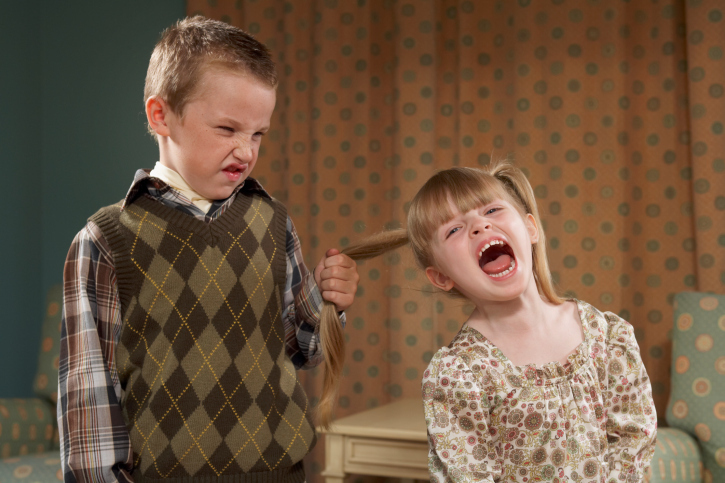 Boorish boy
Boorish boy Types of children's etiquette
There is a large number of types of etiquette. However, there are fewer types of etiquette for children than for adults, they are referred to as:
- Weekend( this form of etiquette includes rules of conduct in public places such as cinema, theater, museum, etc.)
- Guest( norms of behavior inguests)
IMPORTANT: To impart good manners to a child, it is only those parents who observe the rules of etiquette themselves that make a man educated. After all, absolutely all children learn, first of all, on personal examples of adults.
- Passenger( rules of conduct in public transport)
- Speech( rules of verbal communication)
- Family( rules of communication in the family)
IMPORTANT: In addition to parents, an example for the child is his environment, so pay attention to who communicates with yourchild.
 Good company for every child
Good company for every child - Table( rules of conduct at the table)
- Telephone( rules for communicating by phone, including through messages and emails)
- Training( rules of conduct in pre-school institutions, schools, etc.)
By the way, for adults, in addition to the above-mentioned types of etiquette, there are also the following:
- Military
- Diplomatic
- Corporate
- Professional
- Religious
- Wedding
- Sports
- Funeral
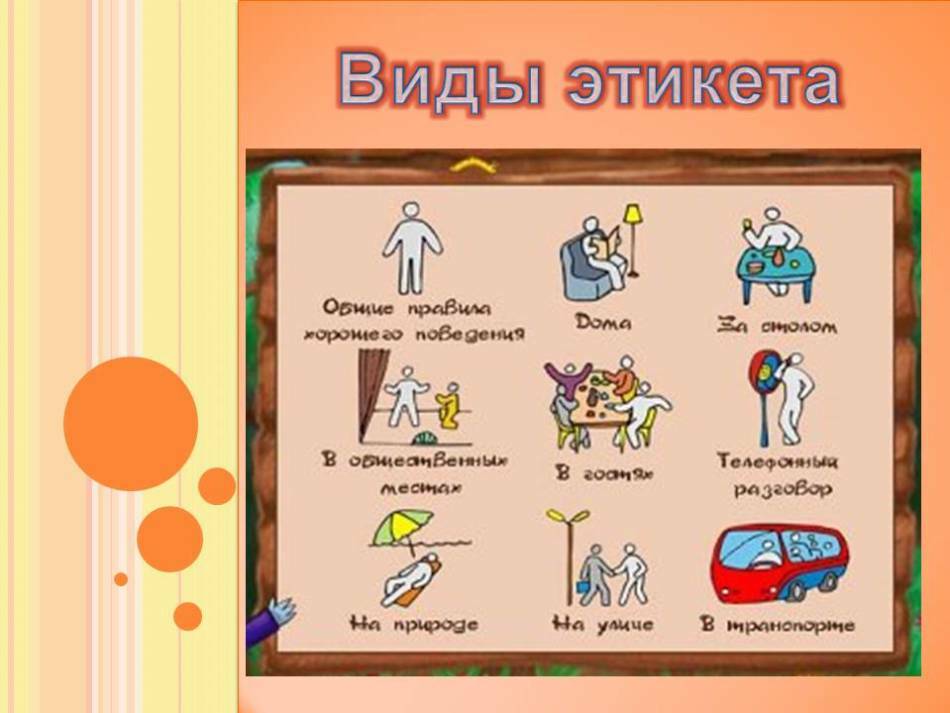 Kinds of etiquetteNCA)
Kinds of etiquetteNCA) At what age should begin learning the etiquette?
Many parents may be surprised if they learn that the rules of etiquette need to start teaching a child from birth.
- Still quite a small crumb can easily be started to accustom to good manners with a look, intonation, certain phrases. For example, you should wish the crumb a pleasant appetite, thank him if he gave you a rattle, etc.
IMPORTANT: Already at a very young age, a child should be praised for good manners, as well as voice intonation to show when he does not act correctly.
- From the age of two to four years, parents must begin to actively teach the child the rules of etiquette. You should tell him how to act, and how not, motivate the child and do not forget about the personal example.
IMPORTANT: At this age it is worth using the game forms of teaching the child etiquette. You can already stage the situation, use the plot games, do not forget about funny poems and fairy tales on the topic of etiquette.
- From the age of four to six the child must realize the need for learning a good manners - this will help him in communicating with peers and adults. An important role in training is assigned not only to parents, but also to teachers of preschool institutions
- Etiquette training is also conducted in schools, but at this age the child must already have certain knowledge in this matter.
 The rules of etiquette should be taught from an early age.
The rules of etiquette should be taught from an early age. Etiquette of courtesy of children: lessons
To learn the rules of etiquette of the child should be on an ongoing basis, using game forms, reminders, examples, etc.- this should be a continuous process. Constant articulation, demonstration of good behavior by adults will necessarily be crowned with success.
With regard to teaching children courtesy in kindergartens, schools, for teachers there are specially designed programs and lessons. The necessary materials and video lessons can be easily found on the Internet.
 Courses of courtesy for children
Courses of courtesy for children Etiquette at the table for children and schoolchildren:
rules Teaching a child how to behave at the table should start from a very young age. Being still very small, the child should understand that to eat food should be in a strictly designated place - in the dining room, in the kitchen.
To the rules of etiquette at the table, which should be taught yet very toddlers, you can also include the following:
- For eating, you should use special cutlery, food should be placed on the plates
- During meals, if necessary, use a napkin
Further,as he grows up, the child must remember the following rules of etiquette at the table:
- To sit down at the table and start eating should be together with all
- At the beginning of the meal one should wish all those present at the table a pleasantappetite
- To eat food should be silently, it is forbidden to indulge at the table
- You should eat with your mouth closed
- You should not champ on the table, loudly crackle, get the food stuck in your teeth
- Large pieces of food should be divided using cutlery into smaller ones - do not stuffmeal full mouth
- It is forbidden to lick the plate even if it was very tasty
- It is forbidden to put elbows on the table
- If the desired dish is located away from the child, then he should ask that the dishpassed - it is forbidden to drag through the whole table
- At the end of the meal it is necessary to say "Thank you!"
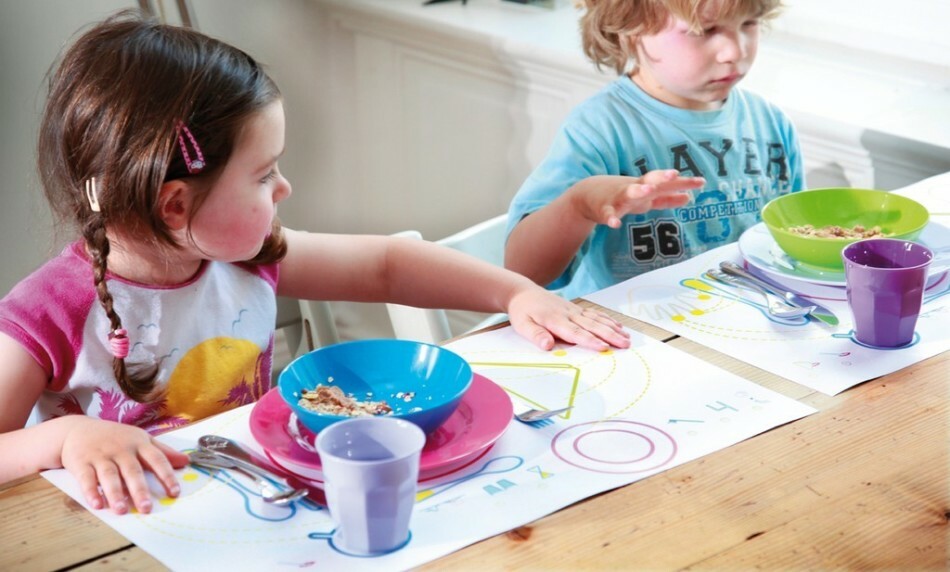 The mat with the scheme will help the children to understand the table layout and not get confused in the
The mat with the scheme will help the children to understand the table layout and not get confused in the cutlery Video: Presentation Etiquette and rules of behavior at the table
Etiquette for children at a party
It is very important to teach the child how to take guests at home and how to behave with them at a party. To do this, remember only some simple rules:
- Do not come to visit without an invitation, and, in case of urgent need, to inform the owners about their visit. Unexpected guests almost always give owners trouble and trouble
- Do not insistently call or knock on the door - no more than two times
- Going on a visit, you should definitely bring a gift or a gift - go on a visit without a guest impolite
- Away guests should behave calmly andrestrained, it is forbidden to make noise and run
- It is forbidden to touch the owners' things without asking, to look into locked rooms, to open cabinets, etc.
- You can not give a bad assessment of the home owners, including the existing disorder, unpleasant odor, etc.
- In case of an invitation to the table, you should eat carefully
- Do not stay for a long time on a visit
- Before leaving without fail it is worth to thank the hosts for the warm welcome and treat
- Guests should be invited in advance
- It is mandatory to pay attention to each
- guests should be thanked for their visit
 Bad behavior at a party
Bad behavior at a party Children's behavioral etiquette in public places
To prevent parents from blushing due to a lamethe behavior of the child outside the walls of the apartment, still at home should tell him about the rules of conduct in public places.
Special attention should be paid to the rules of etiquette in public transport:
- Before entering the transport, it is necessary to skip all who come out of it
- Men and boys must let forward themselves women and girls, and only then go to the public transport lounge
- push passengers elbows, moving deeper into the cabin in order to occupy free space
- You should give way to older people, disabled people, pregnant women and passengers with children
- When entering transport, It is not necessary to crowd at the entrance if there is no need to go out at the next stop.
- It is forbidden to use public transport in order to shake dirt, raindrops or snow from the clothes.
- It is forbidden to run in the passenger compartment,loud talk, dirty seats
- It is prohibited to look closely at other passengers of the
- in public transport. Animals should be transported in special bags or cages, and dogs in muzzles
- Bnsport in advance should be prepared for the exit
- In the street, standing transport should be traversed from the rear, only tram - in front
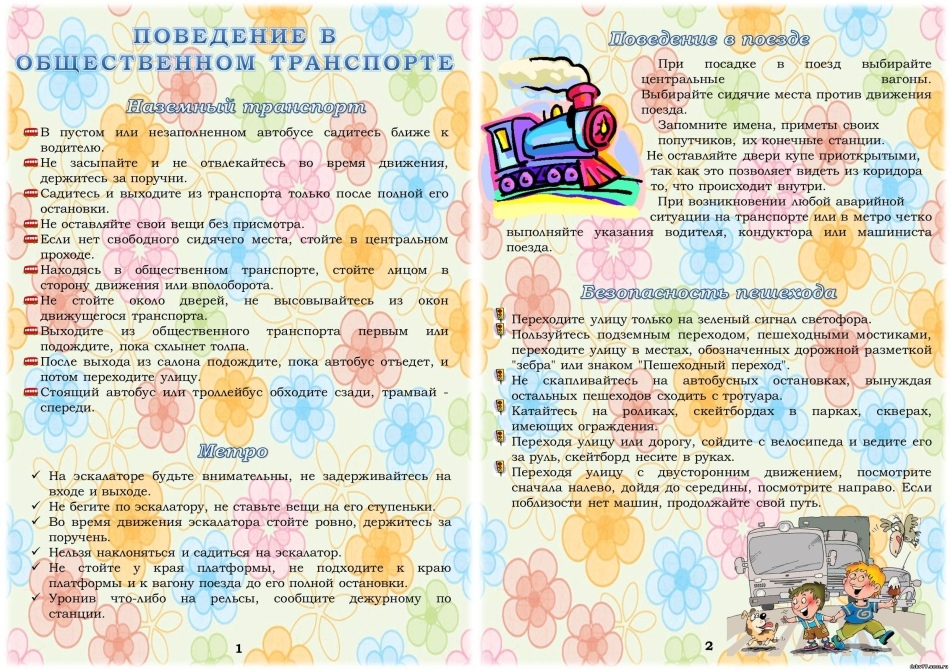 Rules of conduct in transport( picture)
Rules of conduct in transport( picture) Children's etiquette in the street
In the street, like at home, as well as guests,behavior. Parents should pay a lot of attention to ensure that their child is well behaved and on the street.
In obligatory order, the child must understand that:
- Garbage must be in the urn, not on the ground
- Do not walk on the lawns
- Do not make noise, run around, touch others
- Do not point fingers at people, point out their shortcomings
- To avoid collisions withpassers by walking along the sidewalk, you should adhere to the right side of the
- . In case of a stop, you should step aside so as not to interfere with passers-by
- It is forbidden to eat on the go, it's better to stop or sit on the bench
- It's worth rememberingroad traffic rules
- You can not leave the place where your parents asked you to wait
- You can not tell outsiders about your address and phone
- You can not go out with strangers anywhere
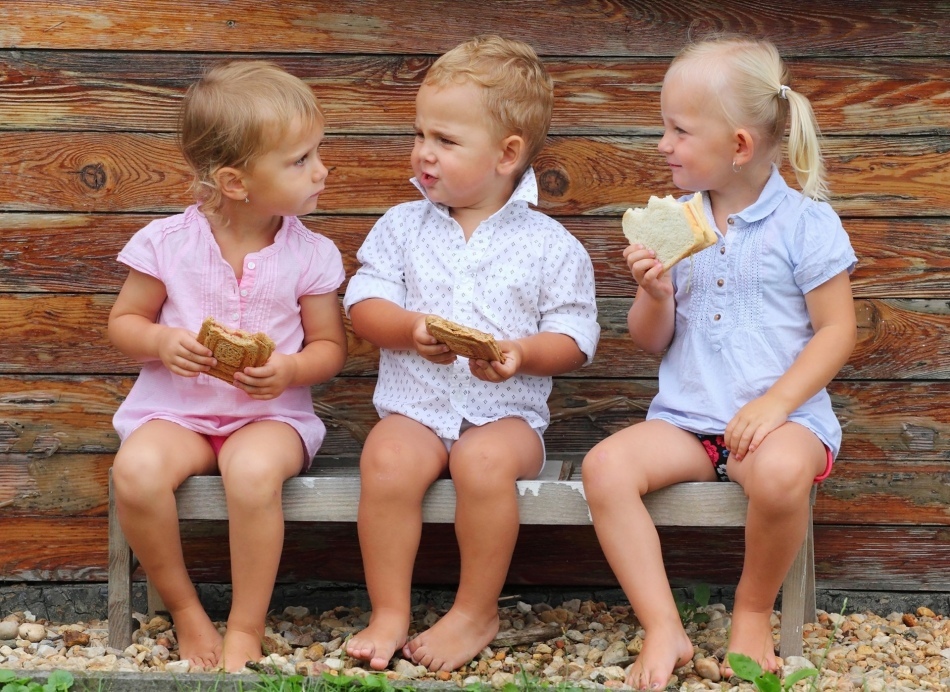 Eat better not on the move but sitting
Eat better not on the move but sitting Children's behavior etiquette in the theater
It's so good when the childhas the opportunity to develop culturally. Therefore, parents should pay attention to this matter and at least occasionally take the child to theaters, cinemas, museums, exhibitions, etc.
At the same time, parents should take care in advance to teach the child good manners. For example, in the theater:
- It should look neat, it is unacceptable to come in dirty or tattered clothes.
- . It is necessary to come in advance to have time to put yourself in order, to put outer clothing in the wardrobe of
- . It is necessary to take a seat, especially if it is located in the middle of the row,, so that you do not have to disturb the rest of the audience afterwards.
- Follow the series to your place with only the face to the seated, apologizing for the inconvenience. Do not forget about the words of gratitude
- During the performance it is forbidden to make noise, share impressions, talk on the phone - it can be done during the intermission
- During the performance it is forbidden to eat or drink.
- During the performance, you should sit still, so as not to interfere behind the seated
 Rulesetiquette in the theater
Rulesetiquette in the theater Video: Rules of conduct in the theater
Etiquette of communication of children with people
There are also rules for communicating with people who should be respected absolutely everything.
These rules should be taught to children from an early age. Still quite kids should know that:
- At a meeting it is necessary to greet familiar
- To adults should be addressed to "You"
- It is forbidden to interrupt adults, to interfere with their conversation and to comment on what
- heard Before parting,
- should be forgiven. It should be thanked for the rendered service, gift given andetc.
- In case of a misdemeanor, ask for forgiveness
- Do not call or abuse other children
- Do not use parasitic words
- Do not misbehave
- During a conversation, you must give an opportunity to speak out to everyone present, do not interrupt them
- If the person begins to act inappropriately,, but do not assimilate to him
- In conversation it is forbidden to discuss other people, criticize them
 Good manners
Good manners Speech etiquette for children: learningJunior schoolchildren
Younger schoolchildren, like preschool children, should learn the rules of communication with people, for this, if necessary, remind them about the rules of speech etiquette set out in the section above, fix them.
Rules of etiquette for the behavior of children in the school
There are certain rules of conduct in school. These include the following:
- Respect the teacher
- The school should come 10-15 minutes before the start of the
- . The school should come prepared - do all the homework, do not forget books and notebooks, do not forget the
- sports uniform.go out of school
- During classes, if there is a need to get out, you should raise your hand and ask permission from the teacher
- You can only skip lessons for good reason.
- . During classes, you should switch offзвук the sound of the mobile phone
- At the beginning of the lesson, the teacher should be greeted standing
- If there is a question or want to answer the question put, you should raise your hand and wait for the teacher to pay attention to you
- You should follow the order in your workplace
- During the lesson you should not have
- The call at the end of the lesson is for the teacher. You should wait until the teacher finishes
- . It is forbidden to run, scream, swear, fight - to break order in school
. At the break most schools have their own additional rules, which must be observed without fail. These rules can be accessed directly at the school.
 Good behavior in school
Good behavior in school Etiquette of children's behavior in the family
The rules of etiquette should be observed everywhere, and the family is no exception. Even the smallest little one should know:
- With parents, grandmothers, grandfathers, etc.you should communicate respectfully, politely
- You can not argue with relatives, swear with them
- When entering the room to parents, you should knock
- Do not swear, fight brothers and sisters, whine on them
- Follow all the rules and traditions established directly in the family
IMPORTANT: It is best to teach the child the rules of behavior in the family by personal example.
 Obedient children help their mother
Obedient children help their mother Telephone etiquette for children
Parents should explain to the child that during a telephone conversation all the rules of speech etiquette should be used. Along with these rules, the following can be attributed to telephone etiquette:
- There is no need to limit phone calls from 21.00 pm to 08.00 am, and on weekends from 21.00 to 10.00 am
- A telephone conversation should begin with a greeting, and at the end of a callyou should say goodbye to
- In places where rules of etiquette are not allowed to talk on the phone, you should turn it off
- If you told someone that you need to call back, then it's absolutely necessary to do this
- The rules of etiquette are forbiddenCalling someone else's phone
- If you dial incorrectly, you should apologize
- Rules of etiquette do not allow loud talking on the phone in public places
- Do not mess around with the phone
- All messages must be correctly written
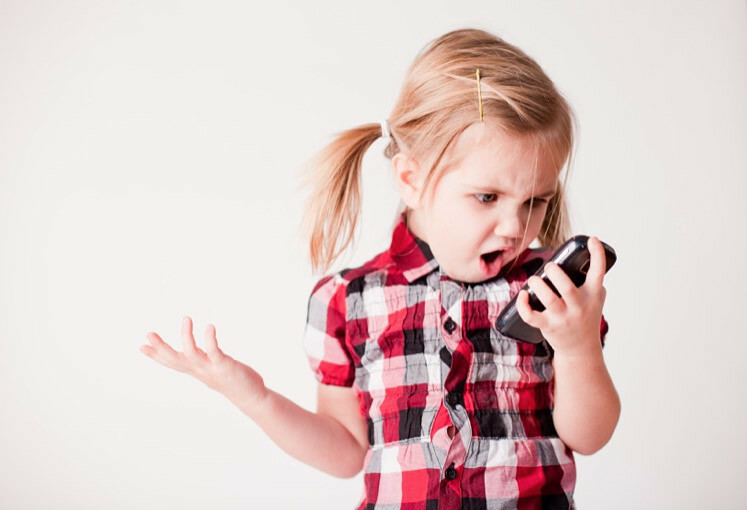 Children should learn to communicate by phone
Children should learn to communicate by phone Teaching etiquette: conversation withchildren
To teach the etiquette of children, in addition to the game forms, it is possible and in the form of purposeful communication. There is a huge amount of materials and lessons that will help both parents and teachers to properly build a conversation and easily convey the necessary information to children.
It should be remembered that the conversation should be:
- Not tiring for children, and therefore not long-lasting
- Emotionally colored, not monotonous - children should be interested
- Two-sided - children should actively participate in the
- conversation Bright and memorable - use various illustrative examplesin the form of pictures, audio materials, video materials
IMPORTANT: Teaching the rules of etiquette in the form of a conversation is best used for children of senior preschool age and schoolchildren.
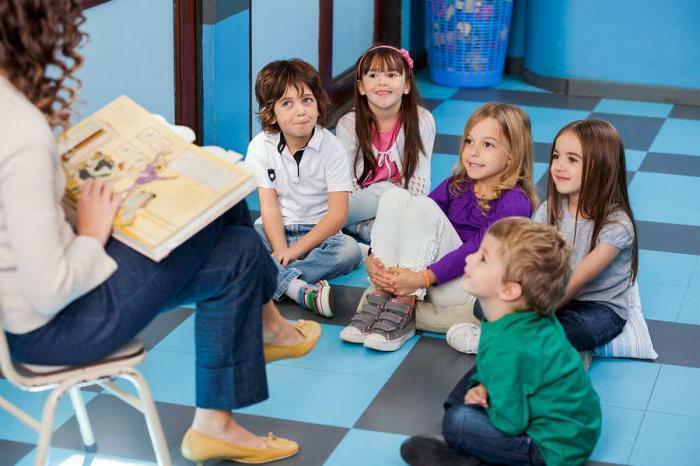 Thematic conversation with children
Thematic conversation with children Etiquette games for children. Competitions, quizzes for children on etiquette
The detailed scripts of games, contests and quizzes, both parents and teachers can be easily found in bookstores, libraries, the Internet, etc.
 Teaching children the rules of etiquette in the game form
Teaching children the rules of etiquette in the game form Books on etiquette for children
In all bookstores, as well as on the Internet, you can find a wide selection of literature on etiquette for children. This can be both books as a benefit for adults, and books for reading directly by older children.
Here is a list of just some of them:
- Behavioral rules for well-bred children. The alphabet of politeness. Ludmila Vasilyeva-Gangnus
- Polite words. Olga Korneeva
- Bon appetit! Lessons of politeness. For children from 1 year. Sergey Savushkin
- Etiquette for children of different years. Andrei Usachev
- Growing up cultured. For children 4-5 years. Svetlana Pyatak, Natalia Tsarikova
- Lessons of Politeness and Compassion. A handbook on children's etiquette for kindergarten teachers and early development schools. Elena Barinova
- The ABC of etiquette for kids.33 rules of good taste. Natalia Ivanova
- Etiquette for the future lady. Antonina Eliseeva
- Sociable stories. Conversations with children about courtesy and a culture of communication. Tatyana Shorygina
- 1000 lessons of etiquette for the smartest kids. Valentina Dmitrieva
- Tips fairy courtesy. Victor Kudlachev, Irina Fomenkova
- Learn to be exemplary. The ABC of courtesy. Natalia Chub
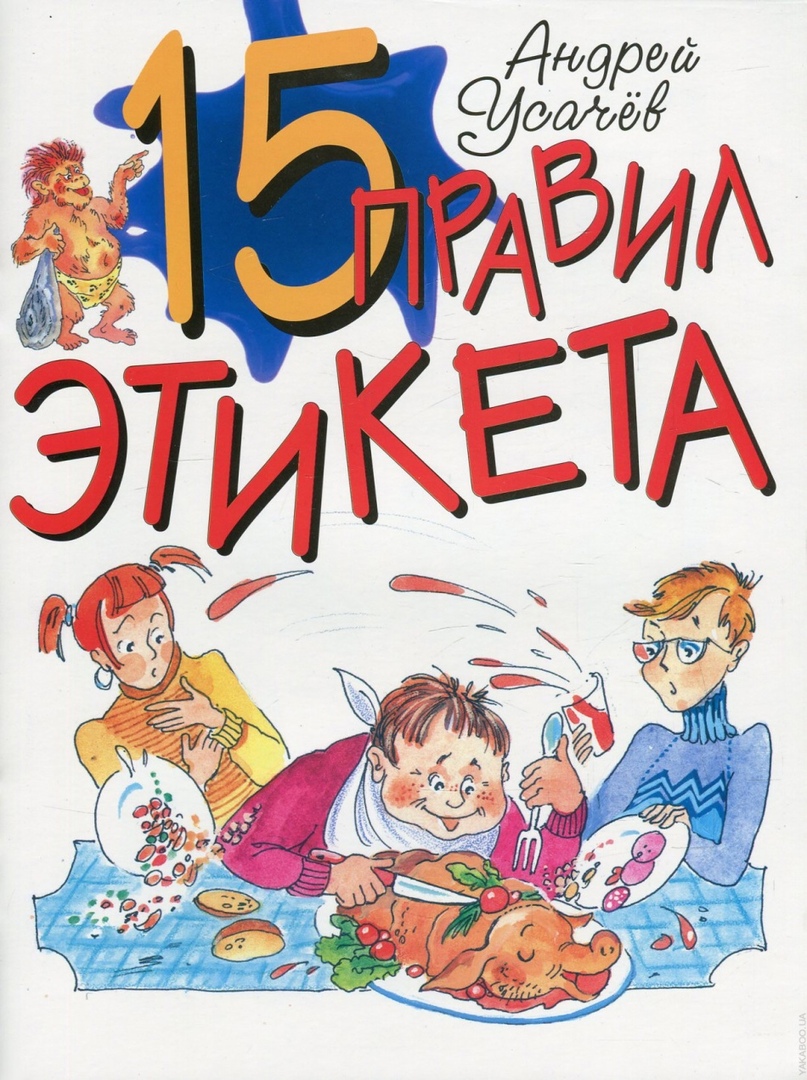 Etiquette book for children
Etiquette book for children Fairy tales about the etiquette for children
All in the same bookstores you can also find fairy tales that are designed to teach children good manners.
Poems about the rules of etiquette of children
I'm saying to a friend: "Hi!",
And he answered: "Hello!".
There's nothing wrong with it,
Both words fit.
The elder, if we meet with him,
The first "Hello!" We say.
Clothes in order - everything is clean, neat -
It's nice to talk with such a person.
And a dirty, shaggy, ragged appearance -
To keep away from familiar rules.
«Hello!» - at a meeting we say
to all friends, acquaintances and relatives.
And when we leave: "Good-bye!" -
Let the separation be short.
Rude talking,
Mocking teasing -
It's bad, ugly!
I need to apologize.
Mom has a lot of household chores,
In dad's worries day after day.
And we help the family ready
We'll postpone the game for later.
If the grandmother gets tired -
She has a rest.
Well, the grandson will not make any noise,
There will be silence in the house.
For the help and support of
Always thanks.
And, having received a gift,
"Thank you!" We say.
Adults chatting.
Important conversation.
They should not interfere -
This is a deal.
In the yard we have trouble -
There is a scam.
We do not offend it,
Just do not play with it. There are such babies -
They praise themselves with all their heart.
They say this usually:
"The braggart is indecent!
Be good not in words,
But in deeds and deeds. "
Above the familiar laugh,
For their eyes to discuss
Only evil clowns can.
You do not have to offend people!
In the bus to the old lady
Place to cede.
Sensitivity and attention
Take care of your elders.
Quiet in transport we go,
here we do not run, we do not litter.
Do not scream and do not sing -
We behave!
Let someone's thing you liked -
Keep your desires in check.
Forget, il address to the owner,
But you do not dare to take someone else's secretly!
In public transport
. Be calm, quiet.
Politely Behave -
Respect others.
Do not lie and slander,
When you are in the answer.
Its guilt decide to admit -
Honest children should be!
 Rhymed rules of behavior at the table
Rhymed rules of behavior at the table Lessons of politeness and etiquette: cartoon for children
There is a huge selection of cartoons, both Soviet and modern, that are able to teach the child courtesies that clearly demonstrate the rules of etiquette. Separate series about courtesy and etiquette rules can be found among such modern cartoons as:
- Babes
- Smeshariki
- Luntik
- Lessons of Aunt Owls
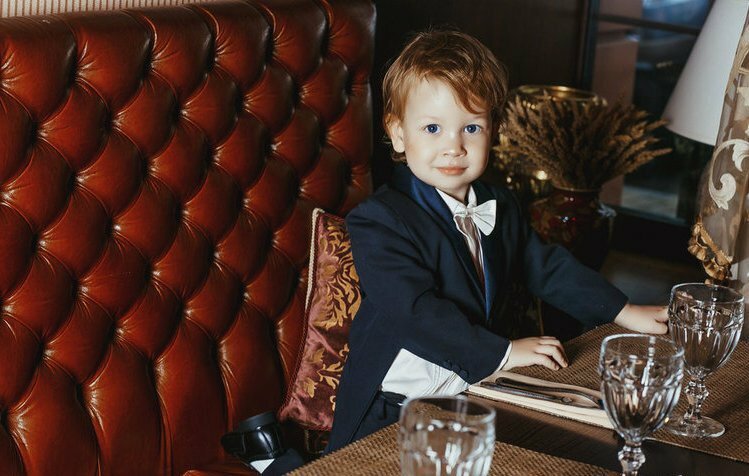 Raised child
Raised child Pay attention to your child, teach him the rules of etiquette, and then you will be able to raise a good person.
